Hard English Words: The Most Confusing Words to Master

Written by
Ernest Bio Bogore

Reviewed by
Ibrahim Litinine

Language mastery demands confronting complexity head-on. English presents learners with an intricate web of challenging vocabulary that tests even native speakers' abilities. These difficult words serve as linguistic gatekeepers, separating casual communicators from those who command true fluency.
The strategic importance of mastering hard English words extends beyond academic achievement. Professional credibility, clear communication, and cognitive flexibility all depend on navigating these linguistic obstacles. Understanding why certain words challenge us reveals systematic patterns that, once recognized, transform overwhelming complexity into manageable skill development.
Modern English contains approximately 170,000 words in current use, with the most challenging ones sharing specific characteristics: irregular spelling patterns, multiple meanings, complex etymologies, or counterintuitive pronunciations. These words didn't become difficult by accident—they reflect centuries of linguistic evolution, borrowing from multiple language families, and systematic sound changes that created the gaps between spelling and pronunciation we encounter today.
Understanding What Makes English Words Difficult
Hard English words fall into predictable categories, each presenting distinct challenges that require targeted learning strategies. Recognizing these patterns eliminates the randomness that makes vocabulary acquisition feel overwhelming.
Complex Academic Vocabulary
Sophisticated vocabulary serves specific communicative functions in professional, academic, and literary contexts. These words carry precise meanings that simpler alternatives cannot replicate, making their mastery non-negotiable for advanced communication.
Perspicacious represents the category of words describing mental acuity with surgical precision. While "smart" or "clever" convey general intelligence, perspicacious specifically indicates the ability to perceive hidden truths or subtle distinctions. The detective who solves cases by noticing overlooked details demonstrates perspicaciousness—a quality that generic intelligence terms fail to capture.
Equanimity describes emotional balance under pressure, distinguishing itself from mere calmness by implying active maintenance of composure despite external chaos. A surgeon maintaining equanimity during a complex procedure exhibits something fundamentally different from someone who remains calm in comfortable circumstances.
Grandiloquent identifies a specific type of inflated speech pattern—language that uses elaborate words to create an impression of importance or intelligence. Politicians employing grandiloquent rhetoric reveal their manipulation tactics through word choice, making this term invaluable for media literacy.
These academic terms matter because they provide conceptual precision. Using approximate synonyms creates ambiguity that advanced communication cannot tolerate. Legal contracts, scientific papers, and policy documents require this level of specificity.
Advanced Scientific Terminology
Scientific vocabulary challenges learners because it combines Greek and Latin roots with specialized meanings that often differ from common usage. These terms represent concepts that everyday language cannot adequately express.
Electromyography exemplifies how scientific terms pack complex procedures into single words. This diagnostic technique measures electrical activity in muscles through electrode placement, providing information about neuromuscular function that physical examination alone cannot reveal. The term's construction—electro (electrical) + myo (muscle) + graphy (recording)—demonstrates how scientific vocabulary builds meaning through systematic root combination.
Photosynthesis represents biological processes that require technical precision. While "how plants make food" provides a basic understanding, photosynthesis specifically describes the conversion of light energy into chemical energy through chlorophyll-mediated reactions. This distinction matters in contexts requiring scientific accuracy.
Biodegradable carries environmental implications that "natural breakdown" cannot convey with equal precision. Products labeled biodegradable must meet specific decomposition criteria under particular conditions—information that generic descriptions obscure.
Scientific terminology serves knowledge economy demands. Industries from biotechnology to environmental science require professionals who can navigate technical vocabulary with confidence and precision.
Legal and Technical Jargon
Professional vocabularies develop specialized meanings that protect against ambiguity in high-stakes contexts. Legal and technical terms often carry consequences that make precision mandatory.
Force majeure demonstrates how legal language borrows from other languages to capture concepts that English lacks equivalent terms for. This French phrase describes unforeseeable circumstances that prevent contract fulfillment—natural disasters, wars, or other extraordinary events beyond parties' control. Legal contracts require this specificity because "unexpected problems" provides insufficient protection in dispute resolution.
Jurisdiction defines the scope of legal authority with geographical and subject-matter precision. Courts cannot hear cases outside their jurisdiction, making this concept fundamental to legal system operation. The term's Latin roots—juris (law) + dictio (speaking)—reflect its function as the authority to "speak the law" in specific circumstances.
Encryption represents technological concepts that affect daily life through digital security. This process converts readable information into coded form that unauthorized users cannot decipher, protecting everything from financial transactions to personal communications. Understanding encryption terminology becomes increasingly critical as digital privacy concerns expand.
Technical vocabulary serves economic necessity. The digital economy requires professionals who can communicate complex concepts accurately and efficiently.
Words with Irregular Spelling and Pronunciation Patterns
English spelling irregularities result from historical language development rather than random complexity. Understanding these patterns reduces memorization burden while improving pronunciation accuracy.
Silent Letters and Unusual Combinations
Silent letters persist in modern English because they preserve etymological connections to word origins, even when pronunciation has evolved. These seemingly arbitrary features follow historical patterns that, once understood, become predictable.
Colonel preserves its French military origins while adopting Italian pronunciation influences. The word entered English through French "coronel," itself borrowed from Italian "colonnello." Modern pronunciation /ˈkɜːrnəl/ reflects Italian phonetic patterns, while spelling maintains French orthographic conventions. This dual influence explains why the word's appearance and sound seem unrelated.
Pneumonia retains its Greek medical terminology roots. The initial "p" in Greek "pneumon" (lung) was pronounced but became silent in English while spelling preserved the original form. This pattern appears throughout medical vocabulary derived from Greek sources.
Castle demonstrates how Middle English pronunciation changes affected modern spelling. The "t" was pronounced in medieval English but gradually became silent in most dialects, creating the modern disconnect between spelling and pronunciation.
These patterns matter because they reveal systematic relationships rather than random irregularities. Recognizing etymological influences helps learners predict similar words' pronunciations and spellings.
Irregular Verb Formations
English irregular verbs preserve ancient Germanic language patterns that regular verbs have abandoned. These forms represent linguistic archaeology—preserved fragments of older grammatical systems.
Go/went/gone demonstrates suppletion, where different forms derive from entirely different root words. "Go" comes from Old English "gān," while "went" originally belonged to the verb "wend" (meaning to travel). "Gone" represents the original past participle of "go." This mixing of different verbs into single paradigms creates the irregularity that challenges learners.
Be/was/been shows how high-frequency verbs resist regularization. These forms derive from multiple Proto-Indo-European roots that merged in Germanic languages. The verb's essential function in sentence construction preserved these ancient forms against regularization pressures that affected less common verbs.
Eat/ate/eaten illustrates vowel gradation (ablaut), an ancient Germanic feature where internal vowel changes indicate tense. This pattern appears in other irregular verbs like sing/sang/sung and ring/rang/rung, revealing systematic historical relationships.
Understanding irregular verb patterns serves multiple functions: it improves accuracy, reveals language history, and provides frameworks for learning similar constructions.
Words with Multiple Meanings and Ambiguity
Polysemous words—those with multiple related meanings—create comprehension challenges that context must resolve. These words demonstrate how languages evolve through metaphorical extension and semantic broadening.
Context-Dependent Meanings
Run exemplifies how basic verbs acquire multiple meanings through metaphorical extension. The core meaning involves rapid movement, but extended meanings include managing (run a business), flowing (water runs), operating (run a program), and continuing (run for office). Each meaning maintains conceptual connections to the original movement sense while serving distinct communicative functions.
Bank illustrates how unrelated words develop identical forms through historical accident. The financial institution derives from Italian "banco" (bench), while the river's edge comes from Old Norse "bakki" (slope). These homonyms require contextual disambiguation despite sharing no semantic relationship.
Bark presents three distinct meanings: dog vocalizations, tree covering, and ship types. Each derives from different etymological sources but converged on identical modern forms. The dog sound comes from Old English "beorcan," tree bark from Old Norse "börkr," and sailing vessels from Latin "barca."
Context-dependent interpretation skills become increasingly valuable in information-rich environments where ambiguity can create costly misunderstandings.
Homonyms and Homophones
Sound-alike words test listeners' ability to distinguish meaning through context alone. These words challenge both comprehension and production, particularly in spoken communication.
Bow demonstrates how spelling can remain identical while meanings diverge completely. The respectful gesture derives from Old English "bugan" (to bend), while the weapon comes from Old English "boga" (arch). The decorative ribbon represents yet another etymological path, borrowed from Middle Dutch "boech."
Tear (rip) versus tear (crying) shows how identical spellings can mask different pronunciations. The ripping action /tɛr/ comes from Old English "teran," while crying tears /tɪr/ derive from Old English "tear." These words require contextual and phonetic disambiguation.
Lead (guide) pronounced /lid/ versus lead (metal) pronounced /lɛd/ creates both spelling and pronunciation challenges. The verb derives from Old English "lædan," while the metal comes from Old English "lead." Historical pronunciation changes affected these words differently, creating modern confusion.
Homophone mastery indicates advanced language processing ability—the capacity to maintain multiple possible interpretations while using context to select appropriate meanings.
Commonly Misused and Mispronounced Words
Certain words consistently challenge speakers because they violate expected patterns or contain counterintuitive features. These errors reveal systematic gaps in language learning that targeted instruction can address.
Frequently Misspelled Terms
Misspell ironically demonstrates the spelling challenges it describes. The double "s" results from combining "mis-" (wrong) with "spell," requiring consonant doubling that writers frequently omit. This meta-example illustrates how morphological awareness prevents spelling errors.
Pronunciation confuses writers because its spelling differs from its root verb "pronounce." The noun form derives from Latin "pronuntiatio," while the verb comes from Latin "pronuntiare." These different Latin sources created the modern spelling distinction that causes errors.
Lieutenant presents different challenges in American versus British English. American pronunciation /luˈtɛnənt/ reflects phonetic spelling interpretation, while British /lɛfˈtɛnənt/ preserves historical French influence. The "lieu" portion means "place" in French, with "tenant" meaning "holding," creating "place-holder" meaning.
Ingenious causes confusion because its root "genius" lacks the "o" that appears in the adjective form. This vowel insertion follows Latin morphological patterns where adjective formation requires connecting vowels between roots and suffixes.
Spelling accuracy serves professional credibility. Written communication errors undermine message effectiveness regardless of content quality.
Pronunciation Challenges
Pseudonym /ˈsudənɪm/ demonstrates how Greek roots create pronunciation challenges. The initial "ps" combination was pronounced in Greek but simplified in English, though spelling preserves the original form. Similar patterns appear throughout vocabulary borrowed from Greek sources.
Cacophony /kəˈkɑfəni/ combines Greek roots meaning "bad sound," but English stress patterns and vowel reduction obscure this etymology. The prefix "caco-" appears in other words like "cacography" (bad writing), making pattern recognition valuable for pronunciation prediction.
Onomatopoeia /ˌɑnəˌmɑtəˈpiə/ challenges speakers through its length and vowel sequence. This Greek-derived term meaning "word-making" requires careful syllable division and stress placement to achieve accurate pronunciation.
Schadenfreude /ˈʃɑdənˌfrɔɪdə/ represents borrowed vocabulary that retains foreign pronunciation patterns. This German compound meaning "harm-joy" requires speakers to navigate unfamiliar phonetic combinations while maintaining recognizable pronunciation.
Ecclesiastical /ɪˌkliziˈæstɪkəl/ demonstrates how Latin-derived religious vocabulary creates pronunciation complexity through consonant clusters and multiple stress patterns.
Pronunciation accuracy affects spoken communication credibility and listener comprehension. Mispronounced words can distract from message content and undermine speaker authority.
Strategic Learning Approaches for Hard English Words
Effective vocabulary acquisition requires systematic approaches that address the specific challenges different word types present. Random memorization fails because it ignores the patterns that make difficult words predictable.
Etymology-Based Learning
Understanding word origins provides frameworks for predicting pronunciation, spelling, and meaning relationships. Etymology transforms seemingly arbitrary features into logical systems.
Latin and Greek roots appear throughout academic and professional vocabulary. Recognizing common patterns like "bio-" (life), "geo-" (earth), and "chrono-" (time) enables learners to decode unfamiliar words independently. The root "graph" (writing/recording) appears in biography, geography, chronograph, and hundreds of other terms, making pattern recognition more efficient than individual word memorization.
Morphological analysis breaks complex words into meaningful components. Understanding prefixes, roots, and suffixes enables learners to construct and deconstruct unfamiliar vocabulary systematically. The word "antidisestablishmentarianism" becomes manageable when analyzed as anti- (against) + dis- (reverse) + establish + -ment (state/process) + -arian (advocate) + -ism (doctrine).
Contextual Immersion Strategies
Vocabulary acquisition accelerates when learners encounter words in meaningful contexts rather than isolated lists. Context provides semantic frameworks that support long-term retention.
Reading diverse genres exposes learners to vocabulary in natural usage patterns. Scientific articles introduce technical terminology through explanatory contexts, while literary fiction demonstrates sophisticated vocabulary through narrative development. Legal documents show precise terminology in high-stakes applications where ambiguity carries consequences.
Active reading strategies enhance vocabulary acquisition efficiency. Analyzing how authors use challenging words, noting context clues that reveal meanings, and observing how word choice affects tone and precision all contribute to deeper vocabulary understanding.
Memory Enhancement Techniques
Systematic memory techniques address the retention challenges that complex vocabulary presents. These approaches work with natural cognitive processes rather than against them.
Visual association connects abstract words with concrete images. The word "perspicacious" might connect with a detective examining evidence through a magnifying glass, linking the concept of keen perception with memorable imagery.
Mnemonic devices help with irregular spellings and pronunciations. The phrase "necessary has one collar and two sleeves" provides a memorable way to remember the single "c" and double "s" in "necessary."
Spaced repetition systems optimize review timing to maximize retention efficiency. These approaches present vocabulary items at increasing intervals, focusing attention on words that require additional reinforcement while reducing time spent on mastered items.
Advanced Vocabulary in Professional Contexts
Workplace communication increasingly requires sophisticated vocabulary that demonstrates expertise and enables precise expression. Professional vocabulary serves as both a communication tool and a credibility marker.
Industry-Specific Terminology
Each professional field develops specialized vocabulary that serves specific communicative needs. These terms often have precise meanings that general vocabulary cannot adequately express.
Medical terminology combines Latin and Greek roots to create systematic naming conventions for anatomical structures, conditions, and procedures. Understanding root patterns enables healthcare professionals to decode unfamiliar terms and communicate with international colleagues who share these etymological foundations.
Legal vocabulary provides precision necessary for contract interpretation and dispute resolution. Terms like "whereas," "heretofore," and "notwithstanding" carry specific legal meanings that affect document interpretation in courts. These words may seem archaic, but they serve essential functions in legal communication.
Technology vocabulary evolves rapidly as new concepts require linguistic expression. Terms like "blockchain," "machine learning," and "cybersecurity" represent concepts that didn't exist decades ago but now require precise understanding in digital economy contexts.
Cross-Cultural Communication Challenges
Global business environments require vocabulary that facilitates communication across cultural and linguistic boundaries. Advanced English vocabulary often serves as a lingua franca in international contexts.
Borrowed words from other languages enrich English vocabulary while creating pronunciation and usage challenges. Terms like "entrepreneur" (French), "kindergarten" (German), and "tsunami" (Japanese) require cultural awareness alongside linguistic knowledge.
False cognates present particular challenges in cross-cultural communication. Words that appear similar across languages may have different meanings, creating misunderstandings that vocabulary awareness can prevent.
Learn Any Language with Kylian AI
Private language lessons are expensive. Paying between 15 and 50 euros per lesson isn’t realistic for most people—especially when dozens of sessions are needed to see real progress.

Many learners give up on language learning due to these high costs, missing out on valuable professional and personal opportunities.
That’s why we created Kylian: to make language learning accessible to everyone and help people master a foreign language without breaking the bank.
To get started, just tell Kylian which language you want to learn and what your native language is
Tired of teachers who don’t understand your specific struggles as a French speaker? Kylian’s advantage lies in its ability to teach any language using your native tongue as the foundation.
Unlike generic apps that offer the same content to everyone, Kylian explains concepts in your native language (French) and switches to the target language when necessary—perfectly adapting to your level and needs.
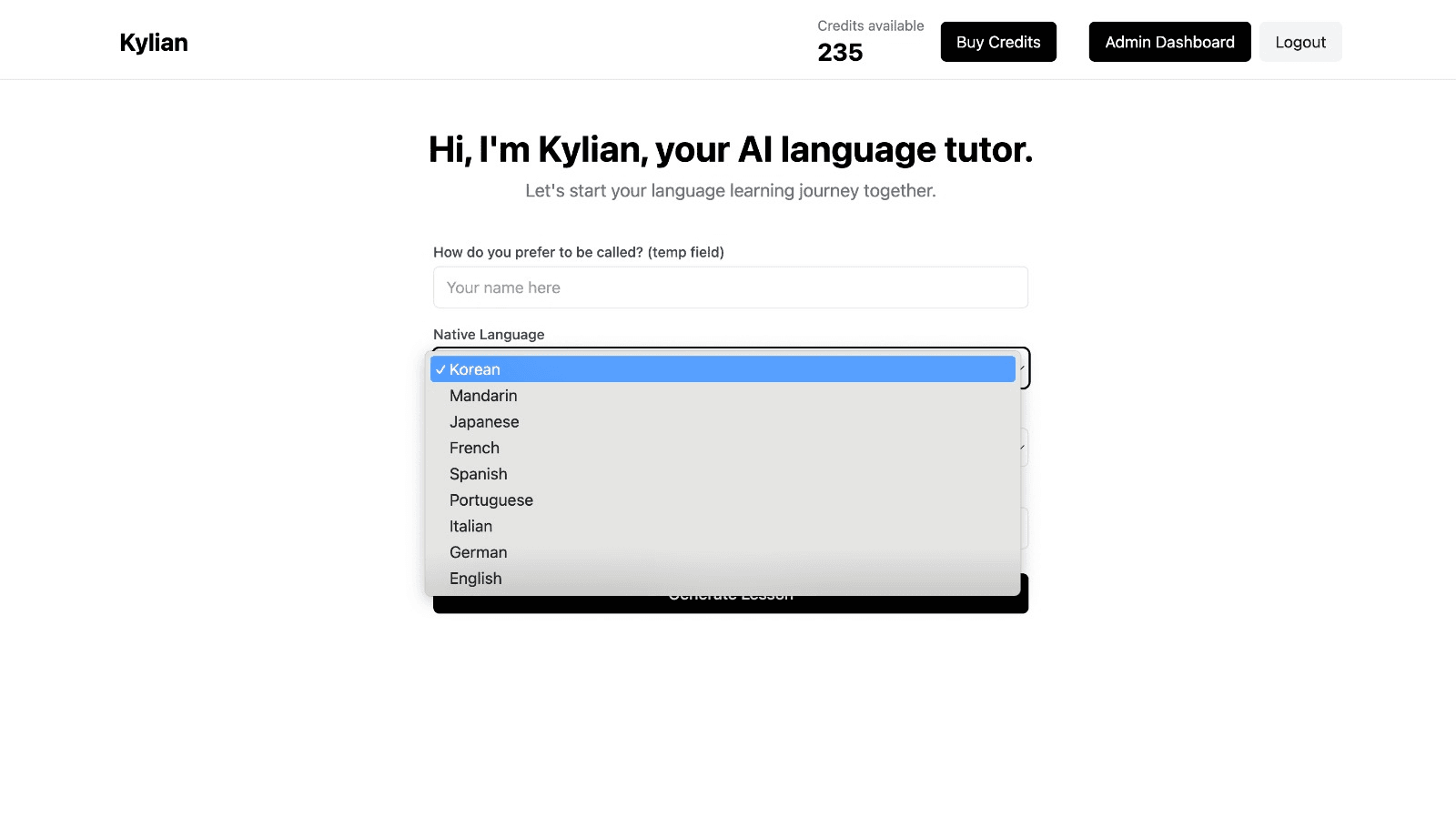
This personalization removes the frustration and confusion that are so common in traditional language learning.
Choose a specific topic you want to learn
Frustrated by language lessons that never cover exactly what you need? Kylian can teach you any aspect of a language—from pronunciation to advanced grammar—by focusing on your specific goals.
Avoid vague requests like “How can I improve my accent?” and be precise: “How do I pronounce the R like a native English speaker?” or “How do I conjugate the verb ‘to be’ in the present tense?”
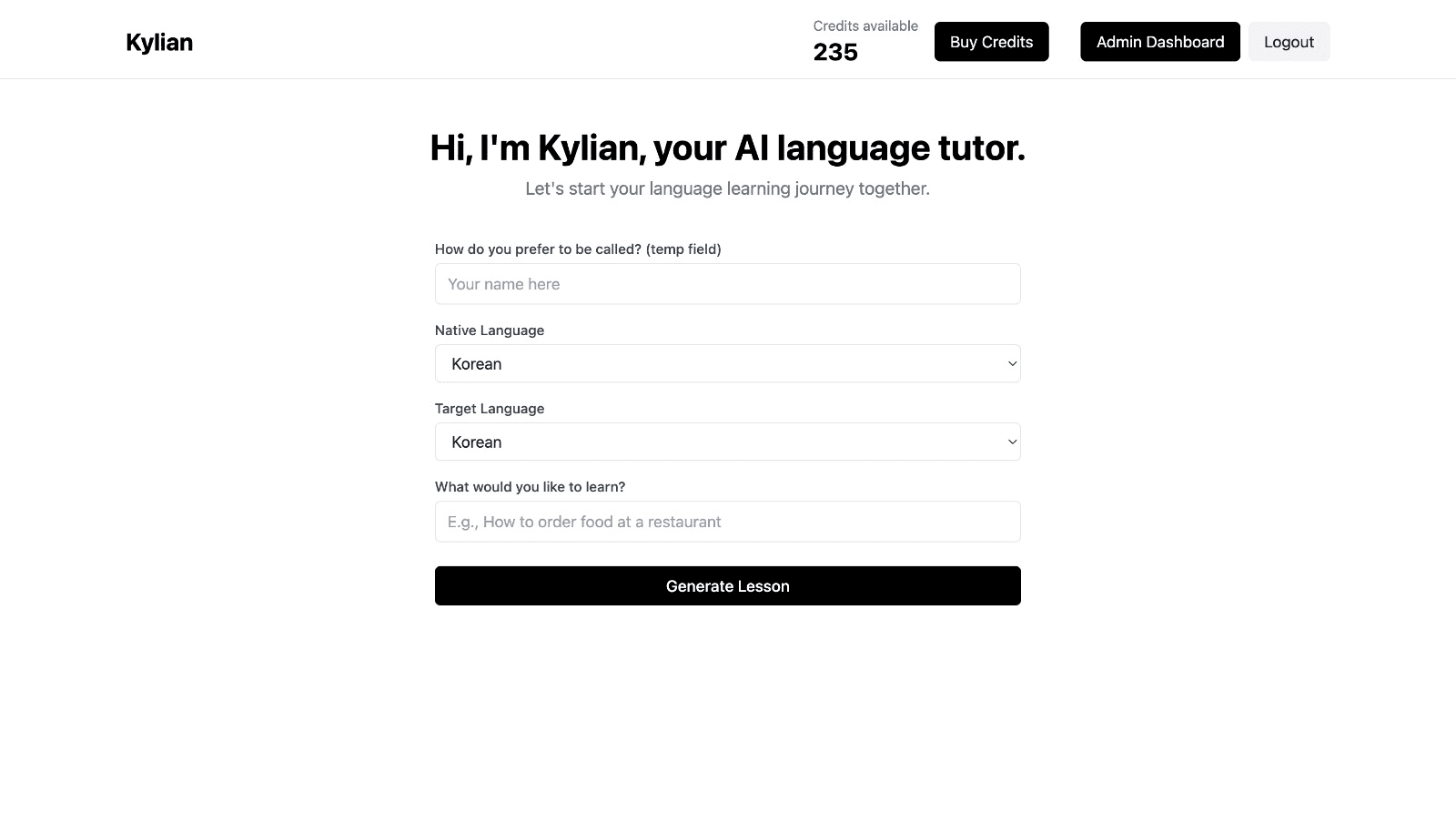
With Kylian, you’ll never again pay for irrelevant content or feel embarrassed asking “too basic” questions to a teacher. Your learning plan is entirely personalized.
Once you’ve chosen your topic, just hit the “Generate a Lesson” button, and within seconds, you’ll get a lesson designed exclusively for you.
Join the room to begin your lesson
The session feels like a one-on-one language class with a human tutor—but without the high price or time constraints.
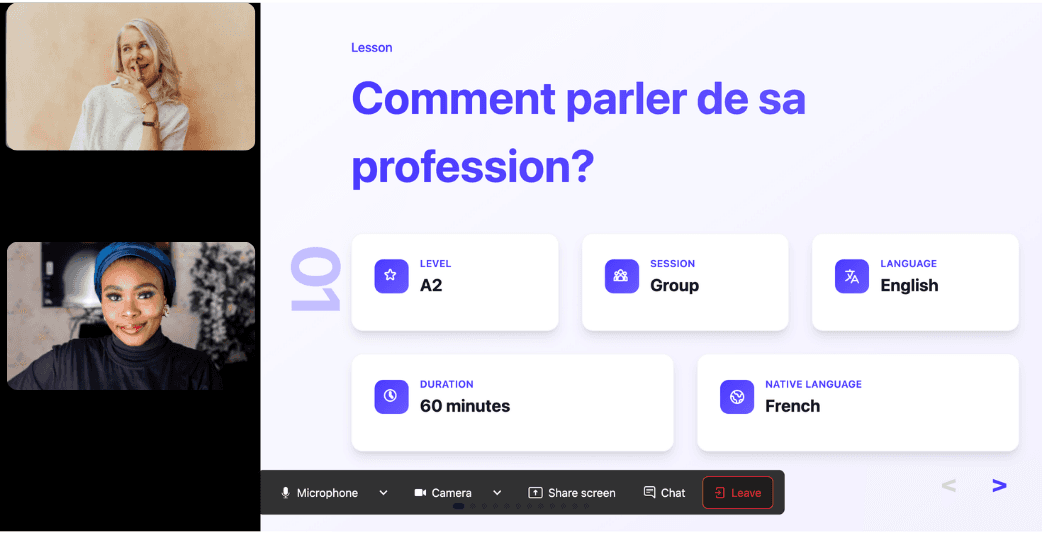
In a 25-minute lesson, Kylian teaches exactly what you need to know about your chosen topic: the nuances that textbooks never explain, key cultural differences between French and your target language, grammar rules, and much more.
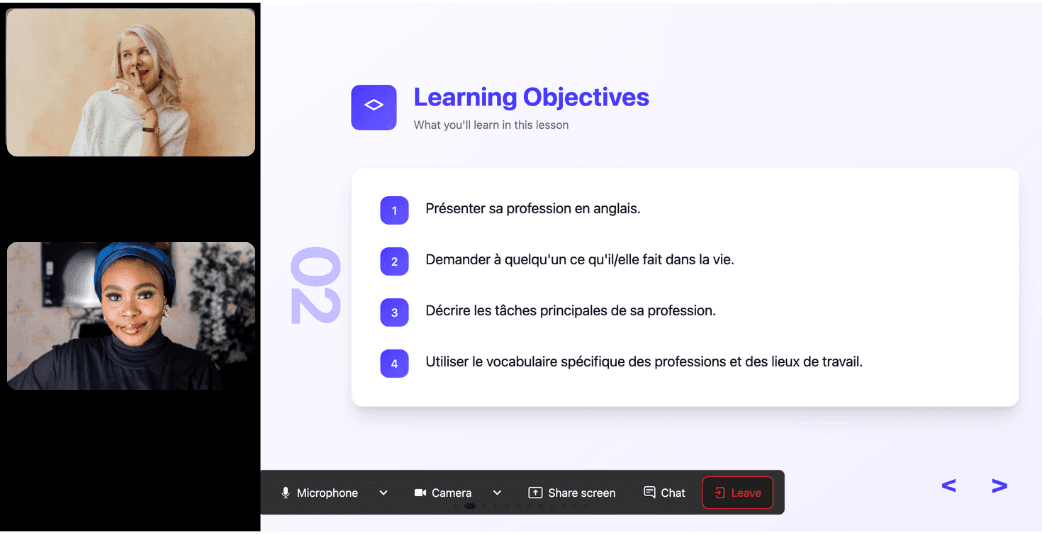
Ever felt frustrated trying to keep up with a native-speaking teacher, or embarrassed to ask for something to be repeated? With Kylian, that problem disappears. It switches intelligently between French and the target language depending on your level, helping you understand every concept at your own pace.
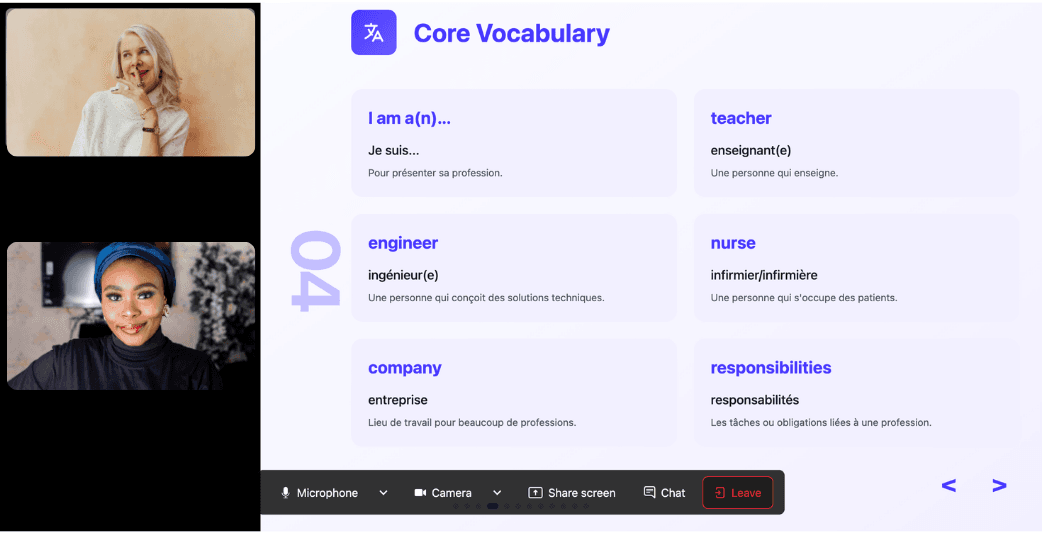
During the lesson, Kylian uses role-plays, real-life examples, and adapts to your learning style. Didn’t understand something? No problem—you can pause Kylian anytime to ask for clarification, without fear of being judged.
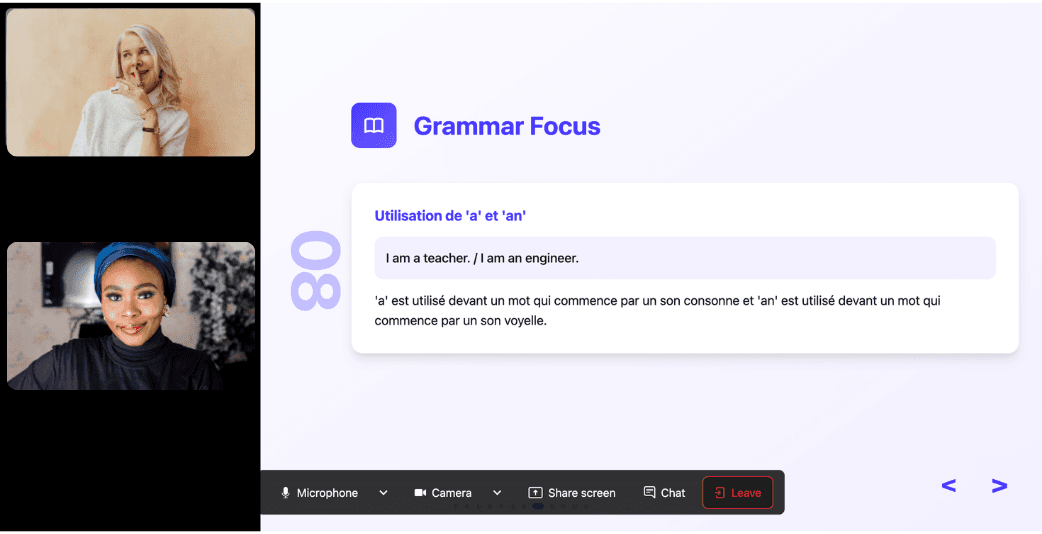
Ask all the questions you want, repeat sections if needed, and customize your learning experience in ways traditional teachers and generic apps simply can’t match.
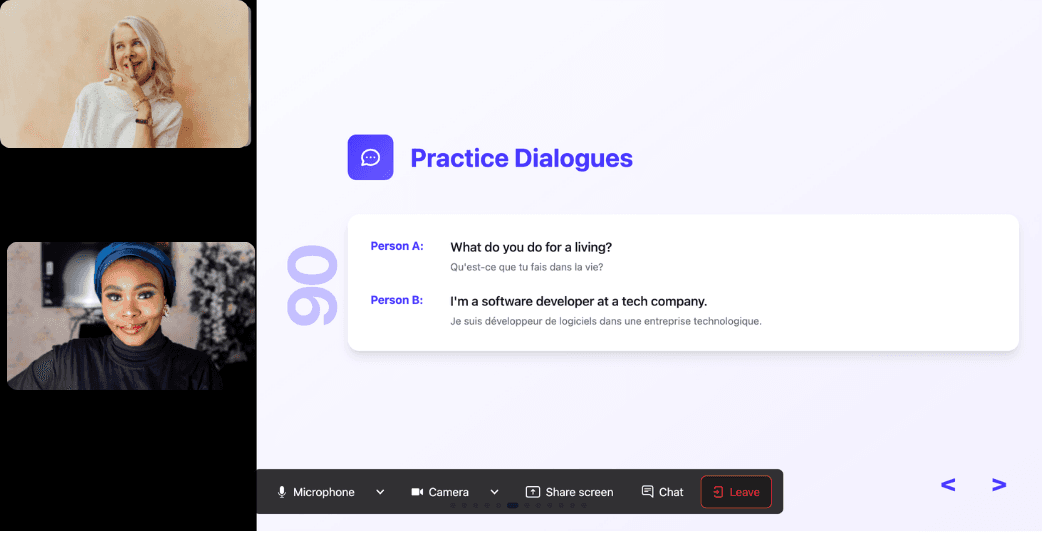
With 24/7 access at a fraction of the cost of private lessons, Kylian removes all the barriers that have kept you from mastering the language you’ve always wanted to learn.
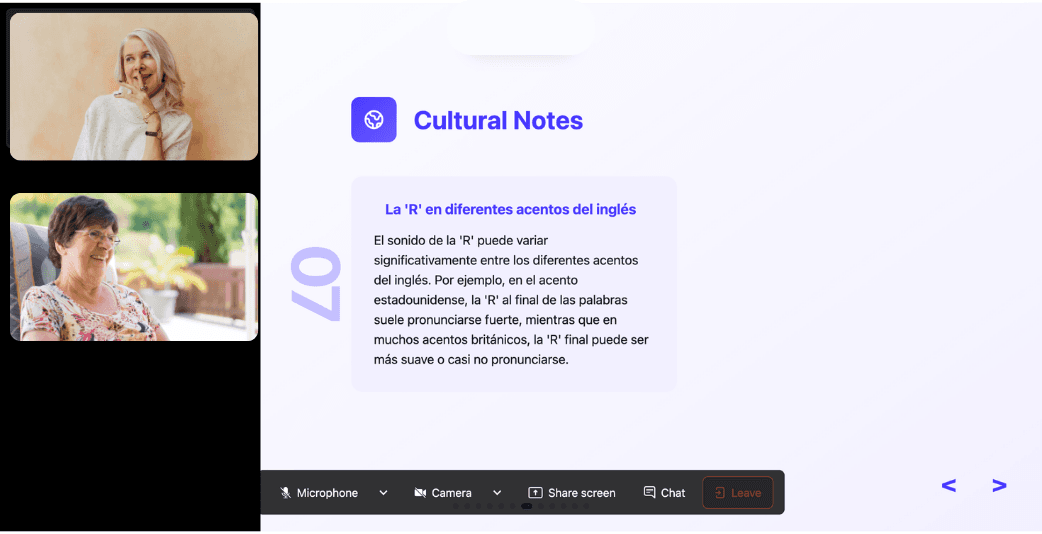
Similar Content You Might Want To Read

Mastering English Homophones: Words That Sound Alike
When someone mentions a "bear market" while holding "bare necessities," they're leveraging a linguistic feature that often causes confusion but adds richness to English: homophones. These words that sound identical but carry entirely different meanings represent a fascinating aspect of language acquisition that merits deeper exploration. Understanding homophones isn't merely academic—it's practical. They illuminate the complexity of English while enabling more precise communication in both written and spoken contexts. By distinguishing between words like "write" and "right," you develop linguistic precision that prevents misunderstandings and enhances your language mastery. This comprehensive guide examines what homophones are, how they differ from similar linguistic phenomena, and why they matter in language acquisition. You'll discover over 100 common homophones with concise definitions and develop strategies for mastering these frequently confused terms.

What’s the Past Tense of 'Bid' in English?
When navigating the complexities of English verb forms, "bid" presents a fascinating case study. This versatile verb carries multiple meanings and follows irregular conjugation patterns that challenge even experienced English speakers. Understanding how to correctly use the past tense of "bid" requires grasping its semantic variations and historical evolution.

Past Tense of Check in English
Understanding verb tense transformations constitutes a fundamental aspect of English language mastery. The verb "check" represents one of those seemingly straightforward verbs that can actually prompt questions when writers and speakers need to express it in past contexts. This comprehensive analysis explores the past tense forms of "check," examining its regular conjugation patterns while addressing common misconceptions and usage variations. The significance of mastering the past tense of "check" extends beyond simple grammar exercises—it directly impacts effective communication in professional, academic, and everyday scenarios. By exploring this specific verb transformation, we gain insights into broader linguistic patterns that enhance overall English proficiency.

Past Tense of Stick in English: Complete Guide
Verb tenses form the backbone of effective communication in English. Understanding how to properly conjugate verbs like "stick" empowers language learners to express past actions with precision and confidence. The past tense of "stick" presents unique challenges due to its irregular conjugation patterns that diverge from standard "-ed" endings. This comprehensive guide explores the various forms of "stick" in past tenses, providing clear explanations, practical examples, and essential context for mastering this fundamental aspect of English grammar.

Hindi Alphabet: Your Guide to Reading Hindi Letters
At first glance, the Hindi alphabet might appear daunting with its intricate curves and unfamiliar symbols. However, once you understand its logical structure and phonetic consistency, you'll discover it's one of the most systematic writing systems in the world. This comprehensive guide will break down the Hindi alphabet into digestible components, helping beginners develop a solid foundation for reading and writing Hindi.

Imbedded or Embedded: Understanding the Correct Usage
Language precision matters in professional communication. The subtle distinction between "imbedded" and "embedded" represents one of those linguistic nuances that, when misunderstood, can undermine credibility. These terms, while appearing interchangeable to the untrained eye, carry different historical trajectories and usage patterns that demand attention from serious English learners and professionals alike. Why does this distinction matter now? In an era where technical writing proliferates across industries from journalism to engineering, mastering these subtle differences separates casual English users from true language professionals. The consequences of misusing these terms extend beyond mere academic interest—they affect how your writing is perceived by expert audiences who recognize the difference. This comprehensive analysis examines the etymology, correct usage, and contextual applications of "imbedded" versus "embedded," providing you with definitive guidance on navigating this common linguistic challenge.